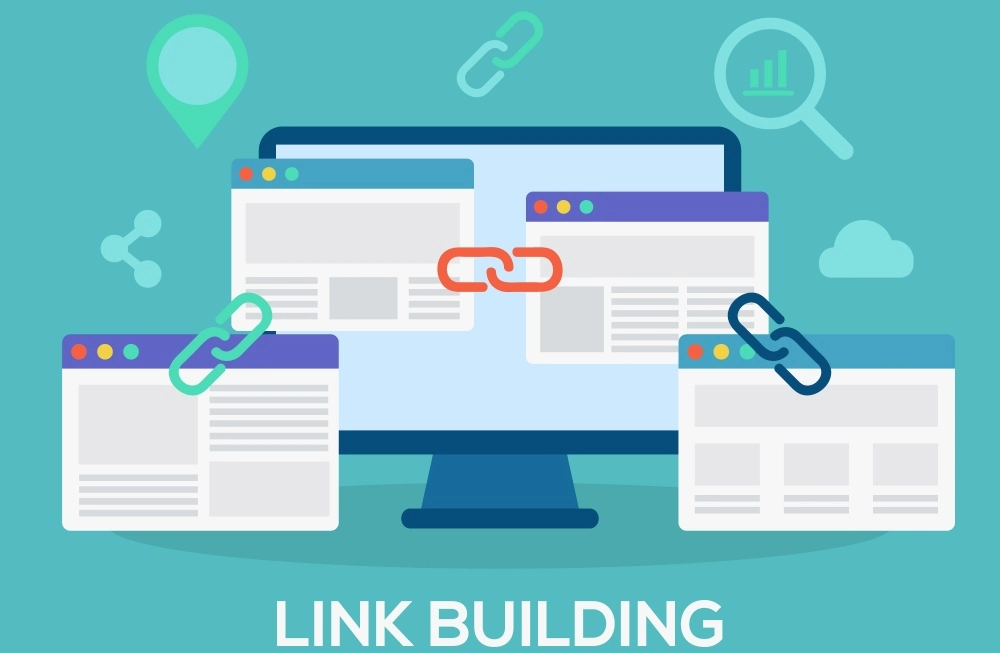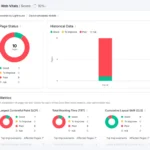
Introduction
For years, link building has been the cornerstone of SEO success. Backlinks were the ultimate trust signal the more you had, the better you ranked.
But as Google’s algorithms have evolved with AI, machine learning, and semantic understanding, the future of link building in 2025 looks very different from the old “more links = better rankings” formula.
Traditional link-building methods like guest posting, link exchanges, and directory submissions are losing their influence. What’s replacing them?
A smarter, trust-based, context-driven approach that prioritizes brand credibility and content quality over raw link quantity.
Let’s explore what’s changing — and how you can stay ahead.
1. The Decline of Traditional Link Building
In 2025, Google doesn’t just count links — it interprets relationships.
Algorithms powered by AI and natural language understanding can evaluate the context of a backlink, the relevance of the referring site, and even the sentiment around your brand.
This means tactics like:
- Paid link placements
- PBNs (Private Blog Networks)
- Low-quality guest posting
…no longer deliver the SEO value they once did.
Google’s SpamBrain and Link Spam Update have made manipulative tactics riskier than ever.
The future belongs to earned, contextual, and brand-driven links.
2. From Backlinks to Brand Mentions
The biggest shift in the future of link building is that links aren’t always required.
Search engines now recognize brand mentions — even without hyperlinks — as authority signals.
These “linkless mentions” occur when your brand is referenced across the web, in:
- Social media posts
- News articles
- Podcasts
- Forums and communities
Google’s entity recognition system can associate those mentions with your site, rewarding your brand for visibility and trustworthiness.
Tip: Focus on digital PR and brand visibility, not just link count.
3. AI-Driven Link Analysis and Contextual Relevance
AI tools like Google’s RankBrain, BERT, and MUM are changing how links are valued.
It’s no longer about the number of links, but the context around them.
In 2025, quality links share three traits:
- Contextual Relevance – They come from content closely related to your topic.
- Topical Authority – They’re from sites recognized as experts in your niche.
- User Value – The link enhances understanding, not just SEO metrics.
For example, a backlink from an AI SEO trends blog to your article on semantic SEO tools is far more valuable than dozens of unrelated links.
4. Digital PR Is the New Link Building
Modern link building has merged with digital PR.
Instead of begging for links, marketers now earn them through newsworthy content, data insights, and collaborations.
Effective Digital PR Tactics in 2025
- Publish data-driven reports or industry surveys that journalists cite.
- Pitch expert commentary to media outlets using platforms like HARO or Qwoted.
- Build relationships with editors and influencers in your niche.
- Host webinars or events that generate press coverage.
These efforts create natural backlinks from authoritative domains while building brand trust — the most valuable currency in SEO today.
5. Link Building Through Content Partnerships
Collaborations are becoming a dominant strategy.
Instead of buying links, brands are co-creating content that earns organic attention.
Examples include:
- Co-authoring whitepapers or industry studies.
- Partnering on podcasts or YouTube interviews.
- Creating joint tools or calculators that attract backlinks.
These partnerships naturally generate links while strengthening both brands’ authority in search.
6. The Rise of Entity and Semantic Link Building
The future of link building goes beyond URLs — it’s about entities.
Google understands the relationships between brands, authors, topics, and industries using Knowledge Graph and entity-based SEO.
When your brand is frequently mentioned alongside specific topics, Google associates you with that field.
How to Build Entity-Based Links
- Optimize for brand consistency (same name, logo, and schema).
- Add structured data (Organization, Author, Product schemas).
- Get cited in reputable sources like Wikipedia, Crunchbase, or industry directories.
These signals help you earn visibility in AI Overviews and entity panels, even without direct backlinks.
7. User Experience as an Authority Signal
Google’s Core Web Vitals and Page Experience updates mean that UX is now part of your authority profile.
Websites that load fast, provide value, and retain users are seen as more credible — making it easier to earn organic mentions and links.
Focus Areas:
- Fast loading (LCP under 2.5 seconds)
- Mobile responsiveness
- Secure browsing (HTTPS)
- Accessible, clear navigation
A great UX encourages users to share your content — generating backlinks naturally.
8. AI Tools for Smarter Link Building
Modern SEO professionals rely on AI-powered tools to uncover link opportunities efficiently.
Best Link Building Tools in 2025
- Ahrefs – Link gap analysis and authority metrics.
- BuzzSumo – Find journalists and trending content for PR outreach.
- SurferSEO – Analyze semantic link context.
- Pitchbox – Automate personalized outreach.
- Small SEO Tools – Check backlinks and domain metrics.
AI tools now help identify contextually relevant opportunities, not just quantity-based link targets.
9. The Role of Social and Video Platforms
In 2025, platforms like LinkedIn, YouTube, and X (Twitter) are critical for earning attention that leads to backlinks.
Social engagement creates brand visibility loops — the more people see, share, and talk about your content, the more likely it is to get cited and linked.
💡 Pro Tip: Turn your high-performing blog posts into short-form video insights or carousels. Each share expands your link potential.
10. Building Trust First, Links Second
Ultimately, the future of link building is about trust — not manipulation.
If people trust your brand, they’ll reference it. If Google trusts your entity, it’ll rank you.
To future-proof your SEO:
- Prioritize E-E-A-T (Experience, Expertise, Authoritativeness, Trustworthiness).
- Produce original, insightful, and verifiable content.
- Earn links through value, not outreach spam.
In 2025, links are no longer currency — they’re consequences of credibility.
FAQs
1. Are backlinks still important in 2025?
Yes — but the focus has shifted from quantity to quality. Google rewards links that are contextually relevant and come from authoritative sources.
2. What’s replacing traditional link building?
Digital PR, brand mentions, and entity SEO are replacing old-school backlink tactics like guest posting and directory submissions.
3. How can AI help in link building?
AI tools identify relevant link prospects, evaluate contextual fit, and predict link value based on semantic analysis.
4. Do no-follow or linkless mentions matter?
Absolutely. Linkless mentions and no-follow links contribute to brand trust and recognition, which indirectly improve rankings.
5. How can small businesses build links in 2025?
Focus on local collaborations, PR, testimonials, and niche partnerships instead of mass outreach or paid links.
Conclusion
The future of link building in 2025 is more human, contextual, and brand-driven than ever before.
Success isn’t about spamming inboxes or buying backlinks — it’s about earning visibility through trust, authority, and genuine relationships.
By combining digital PR, AI-powered research, semantic optimization, and quality content, you can build an SEO strategy that scales sustainably — no shortcuts required.
The backlink game has evolved — and the brands that embrace this new era will dominate search for years to come.
Visit our services – SEO services in hitechcity | SEO services in Surat | SEO company in Jaipur | SEO comapany in Lucknow| SEO company in Ameerpet





